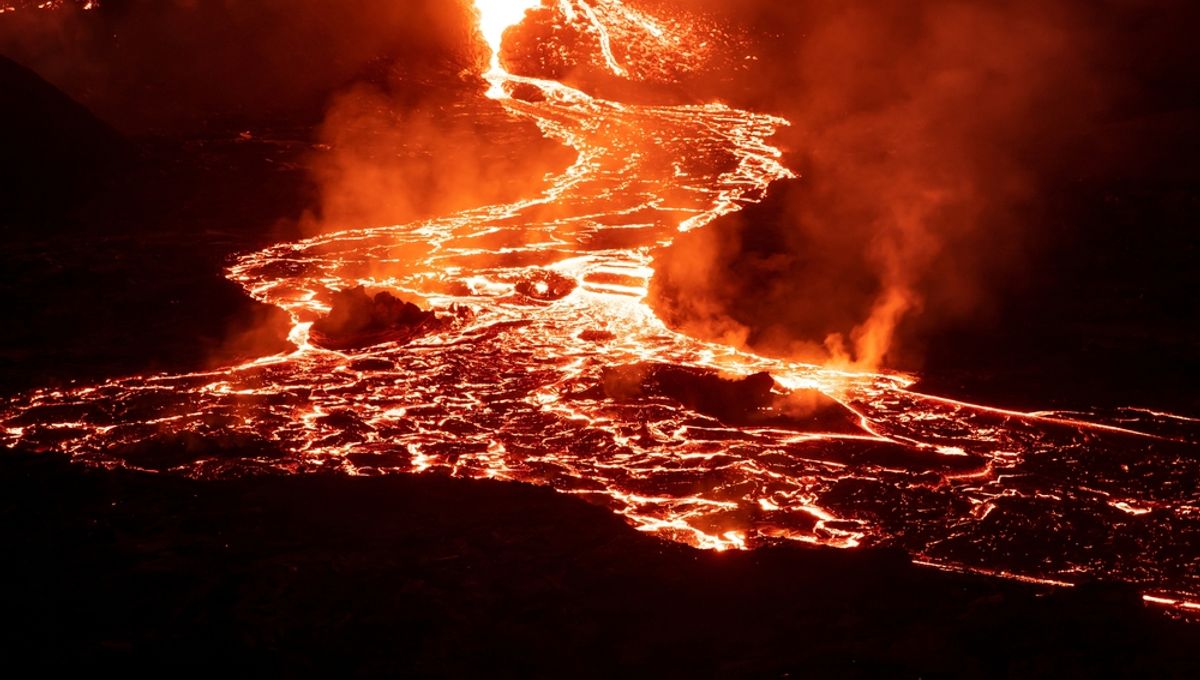
We all go through an awkward phase in our youth, and most of us hope all evidence of it is lost. Our planet is no exception – but as a new study has discovered, Earth’s major makeover wasn’t totally enough to cover up its past.
It’s “maybe the first direct evidence” of preserved materials from the so-called “proto-Earth”, said Nicole Nie, the Paul M. Cook Career Development Assistant Professor of Earth and Planetary Sciences at MIT and lead author of the new work, in a statement this week.
“This is amazing,” she added. “We would expect this very early signature to be slowly erased through Earth’s evolution.”
Earth before Earth
Back at the beginning of its life, our planet was a very different beast from how we know it today. We’re not talking about different climates or dominant life forms; we’re not even talking about more major differences like the barren terrestrial world of the Ordovician era, or the barely-oxygenated Cambrian.
No, this was an Earth unrecognizable to modern eyes on a far more fundamental level: molten, bubbling, and barely two-thirds its current size – and dancing through space with a twin planet, named Theia.
That Earth wasn’t just uninhabited – it was actively hostile to life. The volatile elements so vital for life, such as hydrogen, carbon, and sulfur, were barely present; in fact, thanks to the heat of the sun and the Earth’s rocky makeup, it was virtually impossible for them to hang around at all in any useable state. To think that one day this would be the planet that harbored all known life in the solar system would be not just optimistic, but kind of laughable.
Then, for some reason, something catastrophic happened. Theia and Earth slammed into each other in what’s sometimes called the “Great Impact”, releasing enough energy to effectively “reset” the chemistry of the Earth’s interior. Our home planet became scrambled and melted, and much bigger as it absorbed debris from its sister; what survived of Theia, meanwhile, became our moon.
For Earth, it was a boon. “It was only the collision with Theia that brought volatile elements to Earth and ultimately made life possible there,” explained Pascal Kruttasch, now an SNSF Postdoc Mobility Fellow at Imperial College London, who was not involved in this new study but was lead author of a recent paper examining the effects of the Great Impact. Our home planet received water and carbon in the collision; we got a moon out of it, and even our planet’s magnetic field and tectonic activity might simply be a remnant of this onetime celestial crash.
But any direct evidence of the world before that? That, somehow, was lost.
At least, on Earth: much of what we know about this story has so far been gleaned from comparisons of lunar and terrestrial isotopes, and by deductions based on what substances do and do not exist on the moon versus Earth.
But actually finding any materials on Earth that had survived the Great Impact? That was a pipe dream. Until now.
Messages from space
Back in 2023, Nie and her colleagues were working on a different project: analyzing and comparing meteorites from around the world. The plan was to gather a picture of how the solar system had evolved and changed over time – the meteorites had, presumably, originated at different locations and times, and so should offer a glimpse into how each of those points could vary.
Instead, the team found something unexpected: a “potassium isotopic anomaly”, markedly different from the potassium varieties most often found on Earth.
“We found that different meteorites have different potassium isotopic signatures,” Nie explained, “and that means potassium can be used as a tracer of Earth’s building blocks.”
And so, rather than analyzing meteorites, the team turned their attention to the Earth itself – specifically, in rocks from Greenland and Canada, where some of the oldest preserved rocks on the planet are found, and Hawaii, where the constant volcanic activity regularly brings up rocks from deep in the Earth’s mantle.
“If this potassium signature is preserved, we would want to look for it in deep time and deep Earth,” Nie said.
Incredibly, they found some samples that fit the bill: materials that “were built different”, Nie said, compared to most of the stuff on Earth. But was it really ancient Earth? Or just a coincidence? Well, here’s where things get really interesting: like a grade-schooler dipping a treasure map in tea, the team simulated billions of years of aging and trauma on the samples – and what they found was as close to vindication as it’s possible to get.
No longer were the samples anomalous – after the simulated effects of the Great Impact, and simulated eons of tectonic movement and geological changes, the team were looking at something very similar indeed to modern-day materials. In other words: those original samples were likely “a piece of the very ancient Earth, even before the giant impact,” said Nie.
An unfinished story
It’s a find that turns what we know about the Earth and its history on its head – but here’s the kicker: it’s not complete yet. The work got its start in meteorites, and the anomalous potassium isotopes they brought with them – but those anomalies aren’t precisely the same as what the team found in the deep Earth samples.
And that means that the exact makeup of our early planet – the precise materials that formed this Earth-before-Earth – are still a mystery.
“Scientists have been trying to understand Earth’s original chemical composition by combining the compositions of different groups of meteorites,” Nie said. “But our study shows that the current meteorite inventory is not complete.”
“There is much more to learn about where our planet came from.”
The study is published in the journal Nature Geoscience.
Source Link: “This Is Amazing": Scientists Have Found Evidence Of A Long-Lost World Deep Within The Earth